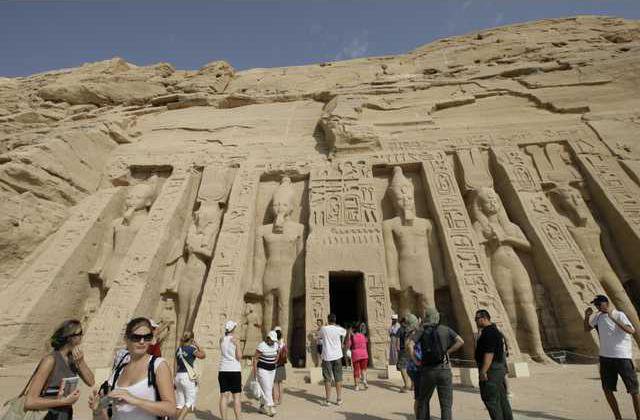ABU SIMBEL, Egypt — Sudan on Tuesday said it knows the location of 11 Europeans tourists and their kidnappers on its territory, but has no immediate plans for a rescue operation.
Sudanese Foreign Ministry spokesman Ali Youssef said in Khartoum that negotiations are under way for the release of the tourists and their eight Egyptian guides, who were kidnapped while on a Sahara desert safari in a remote corner of Egypt. Germany is conducting the negotiations, according to Egyptian officials.
The kidnappers are demanding a ransom of up to $15 million dollars for the five Italians, five Germans, one Romanian and their Egyptian companions, the Egyptian state news agency MENA reported.
Sudanese officials determined that the kidnappers and their captives are at a location in the desert of northwest Sudan, about 15 miles from the Egyptian border, Youssef told The Associated Press, adding that an Egyptian intelligence team had arrived in Sudan in connection with the abduction.
‘‘The two governments of Sudan and Egypt agree that the top priority is the safety of the hostages,’’ Youssef said.
‘‘There are no plans to storm the area as we are only concerned about the lives of the kidnapped,’’ Youssef told the official SUNA news agency. ‘‘The information we have up to now says the kidnappers are Egyptian nationals.’’
The kidnappers are believed to be desert tribesmen, and some reports have suggested they were ethnic Africans. Egyptian officials have said their identity is still not known.
A senior Egyptian security official said members of tribes in the Egypt’s Western Desert and near the border were being question to try find clues on the kidnappers. Another official said authorities were also trying to determine what sort of weaponry the kidnappers have. The officials spoke on condition of anonymity because they were not authorized to talk to the press.
It was the first such abduction of tourists in Egypt, a country that was plagued in the 1990s by Islamic militant bombings and shooting against tourists. The militant violence was largely suppressed a decade ago, and Egyptian officials underlined that the kidnapping was not connected to terrorism, but was by ‘‘criminals’’ seeking ransom.
It was more unusual because it took place not in the well-traveled pharaonic sites along the Nile River, but at one of Egypt’s most remote and little-visited natural attractions in the remote southwest corner of Egypt, near the Libyan and Sudanese borders.
The tourists were visiting Gilf al-Kebir, an isolated plateau in the Sahara desert famed for its prehistoric cave paintings. Best known is the ‘‘Cave of the Swimmers,’’ immortalized in the 1996 movie ‘‘The English Patient’’ and featuring 10,000-year-old paintings of people swimming, a hallmark of an ancient time when scientists think parts of the Sahara were covered by lakes and rivers.
Armed men in SUVs snatched the tour group on Friday while they were camping near the Sudanese border, Egyptian officials said.
The tourists included at least two Italians in their 70s, as well as one 68-year-old, Italian media said. The Egyptians seized with them were guides, drivers and at least one security guard — whose presence is required on trips to the Gilf, located about 550 miles southwest of Cairo.
The uninhabited region is a crossroads for ethnic African tribesmen — including drug smugglers — from Libya, Sudan and even Chad. About 100 miles further south lies Sudan’s Darfur region, where nearly constant conflicts have given rise to armed bandits notorious for robberies and hijackings.
The kidnapping was only discovered because the Egyptian owner of the tour company, who was on the trip, was able to call his German wife by mobile phone, said Garana, the Egyptian minister.
The owner told his wife that a group of armed men, who appeared ‘‘African,’’ drove up to the group while they were setting up their tents, an Egyptian security official said, speaking on condition of anonymity because he wasn’t authorized to talk to the media. The owner and his wife have spoken several times since, and it was believed that negotiations with the kidnappers were being conducted through these calls.
Tourism is Egypt’s biggest foreign currency earner. The industry was devastated by the 1990s’ militant violence but has bounced back since. There have been no major attacks in the capital, Cairo — home of the Pyramids — or the main antiquities sites in the south in more than a decade.
But militant groups have since struck in Egypt’s Sinai Peninsula, with a series of bombings of beach resorts between 2004-2006 that killed 121 people, including tourists.
————
Associated Press writers Mohamed Osman in Khartoum, Sudan, and Maggie Michael in Cairo, Egypt, contributed to this report.
Sudan: Abducted Europeans located in Sahara desert


Sign up for the Herald's free e-newsletter